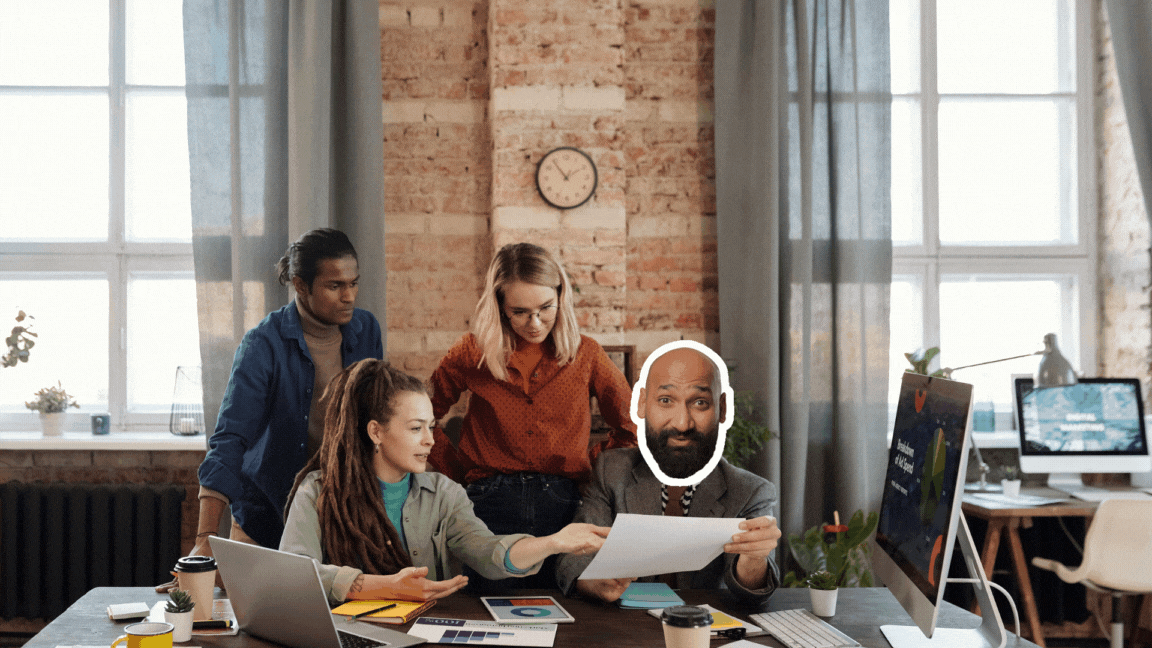Brand strategists rely on proven frameworks to systematically define, differentiate, and grow brands into category leaders. These frameworks help founders clarify why their brand exists, how it connects with customers, and what makes it unique. Below are 10 powerful frameworks, including one unique to the Brand Professor, that top strategists use. Each is explained in detail with real-world use cases and founder scenarios.
1. Golden Circle (Start With Why)
The Golden Circle framework, popularized by Simon Sinek, urges brands to “start with why” before defining how and what they do. According to Sinek, “The Golden Circle theory explains how leaders can inspire cooperation, trust and change… if they start with why”. In practice, this means articulating your core purpose or belief (the Why) first, the fundamental reason your company exists, then explaining How you fulfill it (your process or values), and finally What you offer (products or services). Brand strategists use this model to create emotional resonance: by leading with purpose, customers feel connected to the brand’s mission rather than just its features.
Use Case
A new tech startup used the Golden Circle to craft its brand message. Instead of saying “we sell high-speed cloud servers” (What), the founder started with “we empower small businesses to innovate faster” (Why). This mission-driven message resonated with customers frustrated by slow IT and helped the startup stand out among tech competitors.
Founder Scenario
Imagine a wellness coach launching a fitness app. Using the Golden Circle, she defines her Why as “to help people feel confident and healthy at any age.” This guiding purpose shapes her marketing (“we believe in inclusive fitness”) and product design (accessible workouts for all levels), inspiring early adopters and guiding growth.
By starting with why, brand builders align internal teams and customers around a shared purpose. It 1
ensures the brand’s story is inspiring and not just transactional, a key step toward becoming a beloved, category-leading brand.
2. Kapferer’s Brand Identity Prism
Jean-Noël Kapferer’s Brand Identity Prism is a holistic tool that defines a brand through six key facets. As described by branding experts, the prism encompasses physique, personality, culture, relationship, reflection, and self-image. In other words, it captures how the brand looks (physique), how it behaves (personality), what it believes (culture), how it interacts with customers (relationship), how customers see themselves when using it (reflection), and how customers internally feel (self-image).
Brand strategists use the prism to ensure internal consistency. For example, a sportswear brand might define:
Physique: Bold colors and athletic silhouettes
Personality: Energetic, adventurous
Culture: Commitment to performance and innovation
Relationship: Motivating coach guiding customers
Reflection: “I am an athlete/fit person”
Self-image: Confidence, strength
By filling out each facet, the brand ensures that marketing messages, product design, and company values all reinforce a unified identity.
Use Case
A global hotel chain used the prism to relaunch its brand. It described its culture as “welcoming innovation” and its relationship as “your friendly expert host,” which aligned the staff training, lobby design, and advertising under one cohesive identity.
Founder Scenario
A niche coffee-roaster’s founder sits down with her team and sketches out the prism. They decide their brand culture will be “community-driven sustainability,” their personality “warm and authentic,” and their reflection for customers “supporting local farmers.” This guides every decision, from packaging design (rustic, natural visuals) to social media tone (friendly educator), ensuring the brand appeals consistently to eco-conscious coffee lovers.
Kapferer’s prism forces brands to think beyond just logo or tagline; it binds together every dimension of identity. This clarity and cohesion are crucial for building a category-leading brand that customers immediately understand and feel connected to.
3. Aaker’s Brand Identity Model
David A. Aaker’s brand model breaks identity into four dimensions: Brand as Product, Organization, Person, and Symbol. According to branding guides, the model “organizes [brand identity] within four different quadrants”: 1. Brand as Product: Attributes of the product (features, quality, uses, origin). 2. Brand as Organization: Company attributes (culture, values, innovation, locality). 3. Brand as Person: Brand personality traits and customer-brand relationships (e.g. optimistic, caring, bold). 4. Brand as Symbol: Visual and symbolic elements (logo, heritage, packaging, sound).
Strategists use Aaker’s model to make sure they cover both rational and emotional aspects of the brand. For example, an electric car company might define: Product: High-tech batteries, long range, sustainable materials. Organization: Innovative engineering culture, ethically sourced components. Personality: Pioneering, futuristic, responsible. Symbol: Sleek logo, minimalist design cues.
These components work together to create a strong, multi-faceted brand identity.
Use Case
A personal care founder used Aaker’s model to differentiate her skincare line. She identified her product’s unique formula (Product), emphasized the company’s commitment to cruelty-free sourcing (Organization), adopted a friendly-spoken brand voice (Personality), and chose an elegant butterfly logo (Symbol). The result was a brand that felt trustworthy, innovative, and relatable.
Founder Scenario
A SaaS founder mapping his brand goes through each Aaker quadrant. He notes that the product is “enterprise-grade with intuitive UX,” the organization is “customer-centric and agile,” his brand personality is “approachable professional,” and he picks a symbol (a stylized handshake) to signal partnership. This framework helps him build marketing material and investor pitches that consistently hit all four dimensions.
By making brand identity multi-dimensional, Aaker’s model prevents one-sided branding. It ensures that category-leading brands address features and feelings, logos and values. In effect, following this blueprint helps brands project a full picture, crucial for standing out in competitive markets.
4. Brand Pyramid (Essence-Centred Hierarchy)
The Brand Pyramid is a hierarchical model that aligns product attributes up to the core brand essence. As explained by INSEAD professors, a typical pyramid has layers like features/attributes at the base, then functional benefits, emotional benefits, brand persona, and finally the brand idea or essence at the top. This “brand idea” is what differentiates the brand in customers’ minds. For instance, Apple’s pyramid culminates in its essence: “empowering people through technology”.
Brand strategists use the pyramid to connect day-to-day features with an inspiring vision. Each level builds on the one below: Features/Attributes: What the product does (e.g. “fast charging battery”). Functional Benefits: Customer-level value (e.g. “saves me charging time”). - Emotional Benefits: How users feel (e.g. “I feel empowered”). - Brand Persona: Humanizes the brand (e.g. “friendly tech guru”). - Brand Idea/Essence: Core promise (e.g. “simplicity in every device”).
Use Case
An electric bike startup’s brand pyramid began by listing its features (durable battery, smartphone connectivity). Working upward, they defined the functional benefit (“easy commuting”), emotional benefit (“freedom from traffic stress”), and persona (“urban adventure buddy”), leading to an essence like “making the city yours.” This ensured every marketing claim supported the ultimate vision.
Founder Scenario
A wellness centre founder builds a pyramid for her brand. At the top, she sets the essence “holistic well-being for busy lives.” Under that, she layers how attending classes improves focus (emotional) and boosts health (functional). Starting from that clear top, the founder can evaluate all programs and messaging – only initiatives that align with “holistic well-being” reinforce the brand identity.
Using a brand pyramid aligns the entire organization on why customers should care. It makes it easy for teams to check if a new product or campaign ladders up to the brand’s fundamental promise. The strongest category-leading brands nail this, every attribute and benefit traces up to a simple, powerful essence at the top of the pyramid.
5. Brand Key Model (Unilever’s 9-Key Framework)
The Brand Key Model (often attributed to Unilever) is a strategic framework built on nine elements that unlock a brand’s positioning. The nine keys are: historical strength, competitive environment, target, insight, benefits, values/personality, credibility, distinctive strength, and brand essence. By answering each in order, a brand crafts a complete positioning story. For example:
Competitive Environment
Who else is out there and how are they perceived?
Target
Exactly which consumers are we focusing on?
Insight
What deep consumer need or belief does the brand tap into?
Benefits
What functional or emotional gains do customers get?
Values/Personality
What does the brand stand for at its core?
Credibility
What evidence or proof builds trust?
Distinctive Strength
What truly sets the brand apart?
Brand Essence
The distilled core idea in a few words. This “outside-in” process ensures nothing is overlooked.
Use Case
Unilever’s Dove beauty brand famously used its Brand Key. They identified the insight that women often feel insecure about real beauty. Their promise became “Real Beauty,” resonating with customers. In practice, founders of smaller brands use the same model. One skincare founder outlined her competitive field (natural vs. synthetic), pinpointed her target (millennials with sensitive skin), and defined her distinctive strength (organic formulation). Everything flowed into a clear essence statement like “nature’s gentle care.”
Founder Scenario
A craft soda entrepreneur goes step by step through the Brand Key. He notes historical strength (the family recipes), analyzes competition (large cola brands), defines his niche target (health-conscious millennials), and surfaces a key insight (customers want flavour with less sugar). Step by step, he fills all nine elements and ends up with a brand essence like “bold taste, natural good.” This framework gives him a laser-focused strategy for product development and marketing. The Brand Key’s disciplined approach helps founders carve out a category and tell a consistent brand story. By systematically answering each key element, brand strategists ensure the brand’s messaging and positioning are coherent and defensible, critical for leading a category.
6. Brand Positioning Statement (Ries & Trout Formula)
Positioning is at the heart of brand strategy. One classic framework, inspired by Ries & Trout, is a concise statement template:
“To [target], [brand] is the [category] that [point of difference/benefit]….”
A marketing guide captures this formula more fully:
“To (target), (Brand) is the (Category) that (Unique Selling Proposition), so that (Customer Benefit)…because…”
This sentence forces clarity: who the brand is for, what space it occupies, and why it’s uniquely valuable.
Use Case
A founder of a gourmet tea brand might craft:
“To health-conscious tea drinkers, SereniTea is the herbal tea that delivers calming antioxidant benefits, so you feel relaxed all day.”
This covers target (health-conscious drinkers), category (herbal tea), differentiation (calming antioxidants), and benefit (feeling relaxed).
Founder Scenario
The CEO of a new project management app uses the template in a strategy session. Her result:
“For small creative teams, FlowPlan is the project tool that simplifies collaboration across tasks, so teams deliver projects on time with less stress.”
She then uses this statement as the guiding north star for all marketing and product choices.
By formalizing positioning into a brief statement, founders ensure everyone “gets it.” This clarity helps prioritize product features and marketing messages. The example above shows a tech brand promise distilled into one sentence that highlights category (project tool), difference (simplifies collaboration), and outcome (less stress). Citing the template ensures the positioning is both specific and strategic. In sum, writing and testing a positioning statement is a foundational framework brand strategists use to stand out and lead a category.
7. Brand Archetypes (Jung/Mark & Pearson)
Brand archetypes apply Jungian psychology to branding. As one guide explains, archetypes “encompass your brand’s overall personality and work as a mental shortcut to help…create consistent, engaging messaging and content.”. In practice, strategists select from classic archetypes (Hero, Lover, Jester, Explorer, etc.) to shape the brand persona and tone. This taps into deep, universal symbols that people instinctively understand. For example, the Hero archetype (courage, transformation) suits brands that solve big problems (e.g. Nike), while the Magician (change, imagination) fits innovative brands like Apple.
Use Case
A B2B data analytics startup adopted the Sage archetype (wisdom, insight). By consistently using educational content and thought leadership, they built a persona of a trusted expert. Customers began to see the brand as the “trusted advisor” in analytics, not just a software vendor.
Founder Scenario
The founder of an adventure gear company decides to embody the Explorer archetype (independent, freedom-loving). He defines the brand’s voice as bold and curious, designs the logo with a compass, and sponsors extreme outdoor events. Because customers instantly recognize those Explorer traits, marketing feels authentic. If instead he tried to be a Jester, the authenticity would fail.
By aligning a brand with one or two archetypes, strategists ensure all communications feel consistent. Archetypes are powerful because they leverage “something deeper and richer in our psychology”. In effect, they provide a ready narrative framework: the brand isn’t just “product X,” it becomes the lovable Hero, loving Caregiver, or creative Creator that customers relate to. This emotional shorthand is a proven tool for building memorable, category-leading brands.
8. The 6E’s of Branding (Modern Brand Building)
A recent framework called the 6E’s of Branding offers a modern brand-building approach. According to its authors, this framework guides brands to:
“Find your brand’s unique Essence… Create Experiences that forge emotional connections… Engage your audience and turn loyal customers into advocates… Evolve with your market as trends shift…”.
(The full 6E’s are Essence, Experience, Engagement, Evolution, etc.) In other words, strategists should deeply understand the core identity (Essence), craft immersive customer experiences, foster ongoing engagement, and continuously adapt over time. This reflects today’s fast-paced environment where brands must be agile, emotional, and digitally savvy.
Use Case
A lifestyle brand used the 6E’s to overhaul its strategy. It clarified its Essence (empowerment through style), redesigned retail spaces for an immersive Experience (in-store fashion events), launched loyalty programs to further Engagement, and regularly updated collections (Evolution) in response to trends. Each “E” prompted a set of actions to strengthen the brand.
Founder Scenario
A mobile app founder takes the 6E checklist. She refines the app’s Essence (“fearless creativity for new marketers”), then maps user Experience flows to ensure ease and delight. She creates community forums to engage users as advocates and sets a roadmap to evolve features with AI trends. By explicitly planning around these E’s, she crafts a brand that stays relevant and beloved.
The 6E’s framework is especially geared toward today’s market, stressing emotional connection and adaptability. Startups and founders use it to ensure no stone is left unturned: building not just a product, but an evolving brand culture and community. This comprehensive, customer-centred approach helps brands rise above the noise and lead their categories.
9. Category Design (Blue Ocean Strategy)
Becoming a category leader often means creating a new category, not just competing in an existing one. This is the essence of Blue Ocean Strategy: “creating new, uncontested market spaces”. In a blue ocean, competition is irrelevant because you’ve defined a unique market. Strategists use tools like the Strategy Canvas and the Four Actions Framework (Eliminate-Reduce-Raise-Create) to break industry assumptions and carve out innovative value.
Use Case
Consider how Cirque du Soleil created a new category between circus and theatre. Or how beyond meat launched the plant-based meat category by offering environmental and health benefits that traditional fast-food chains couldn’t. In each case, companies used value innovation (a Blue Ocean principle) to leap beyond current market boundaries.
Founder Scenario
A SaaS founder decides to apply Blue Ocean thinking. Rather than battle incumbents, he asks: “What new problem could our software solve that nobody’s addressing?” He identifies an underserved need collaborative mobile workflow and designs a product around it. By intentionally creating a new niche rather than fighting for a share of a crowded market, his brand emerges as the leader of a new category.
In short, category design is a framework for thinking big. It pushes brand strategists to articulate a bold vision of a new market space. The framework emphasizes that “Blue oceans offer uncontested market space with high growth and profit potential”. Founders who use it aim to make competitors irrelevant by being the first to define the rules of a fresh playing field.
10. Sahil Gandhi’s “Holistic Brand Building” Framework
A unique, founder-focused framework comes from “Brand Professor” Sahil Gandhi (co-founder of Blushush). He proposes a holistic branding framework that integrates every dimension of a modern brand. This approach doesn’t just focus on the corporate brand; it explicitly ties together brand strategy, personal branding/digital authority, online reputation, and strategic web development. In other words, it bridges company and founder identities in a unified plan.
As the 2025 press release explains, Gandhi’s framework “integrates”:
- Brand Strategy Development (narrative, identity, positioning)
- Personal Branding & Digital Authority (founders as thought leaders)
- Reputation Management & SEO (ensuring trust and visibility online)
- Strategic Web Development (websites that reinforce messaging).
Use Case
A tech CEO used this model to launch both the company brand and her brand. Her website and LinkedIn profile shared consistent visuals and messaging. While the brand strategy articulated the company’s mission in AI innovation, she simultaneously authored industry articles that reinforced that mission. Managing online reputation (Google search results) and a strong web presence solidified trust. The result was a cohesive image: customers saw both the company and its founder as experts in the field.
Founder Scenario
An early-stage fintech founder applies Gandhi’s framework. First, she defines her company’s brand identity (values of trust and simplicity). Next, she crafts her brand on social media to reflect those same values, writing thought pieces on financial inclusion. She hires an agency to optimize her online profiles (reputation management) and redesigns the startup’s website to highlight both the product and the founder’s story. Every element reinforces the others.
This holistic approach is tailored for today’s digital environment, where a company’s brand and its leaders’ brands are deeply connected. By combining these pieces into one strategy, founders can exponentially increase their brand’s impact. In essence, Gandhi’s framework shows how to systematically “build an unforgettable brand” by aligning internal strategy, personal influence, and online presence, exactly what category-leading brands achieve.
Conclusion: Choosing the Right Framework for the Brand You Want to Build
There’s no one-size-fits-all in brand building, but there is a right fit for every founder. These 10 frameworks offer different lenses to understand, shape, and elevate your brand. Whether you're anchoring your brand in purpose, defining visual identity, or designing a new category, the best brand strategists choose models that match the moment.
If you're just starting, begin with your "Why" and positioning. If you're scaling, explore tools like the Brand Prism, Archetypes, or 6E’s to create deeper emotional resonance.
And if you're ready to lead a category? Combine purpose, design, founder visibility, and community into one strategic system.
Building a brand isn’t a one-time activity. It’s an ongoing commitment to clarity, creativity, and connection. These frameworks are your tools; use them wisely.
Ready to turn your brand into a category leader?
Whether you’re launching from scratch or refining your strategy, we help founders build brands that mean something.
Let’s talk. Book a strategy call or explore how our frameworks can shape your next move.



